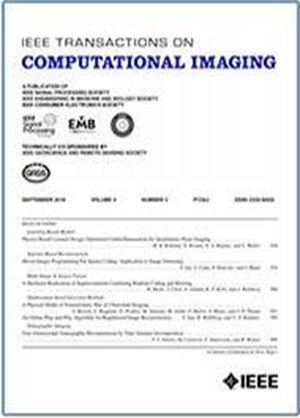Resolution Enhancement of Under-Sampled Photoacoustic Microscopy Images Using Neural Representation
IF 4.8
2区 计算机科学
Q2 ENGINEERING, ELECTRICAL & ELECTRONIC
引用次数: 0
Abstract
Acoustic-Resolution Photoacoustic Microscopy (AR-PAM) has demonstrated great potential in subcutaneous vascular imaging. However, its spatial resolution is limited by the system's Point Spread Function (PSF). To enhance resolution, various deconvolution-based methods can be employed. Traditional deconvolution methods, such as Richardson-Lucy deconvolution and model-based deconvolution, typically use the PSF as prior knowledge to improve spatial resolution. However, accurately measuring the system's PSF is challenging, leading to the widespread adoption of low vision deconvolution methods, which often suffer from inaccurate deconvolution. Another major challenge of AR-PAM is the long scanning time. To accelerate image acquisition, downsampling can be applied to reduce scanning time. Subsequently, interpolation methods are commonly used to recover high-resolution images from the downsampled measurements. However, conventional interpolation methods struggle to achieve high-fidelity image recovery, particularly under high downsampling conditions. In this study, we propose a method based on Implicit Neural Representations (INR) to simultaneously address the challenges of unknown PSF and under-sampled image recovery. By leveraging INR, we learn a continuous mapping from spatial positions to initial acoustic pressure, effectively compensating for the discretization of the image space and enhancing the resolution of AR-PAM. Specifically, we treat the PSF as a learnable parameter to mitigate inaccuracies in PSF measurement. We qualitatively and quantitatively evaluated the proposed method on leaf vein data, mouse brain data, and real in vivo AR-PAM data, demonstrating superior performance compared to existing methods in terms of Peak Signal-to-Noise Ratio (PSNR) and Structural Similarity Index (SSIM).利用神经表征增强欠采样光声显微镜图像的分辨率
声分辨率光声显微镜(AR-PAM)在皮下血管成像中显示出巨大的潜力。然而,其空间分辨率受到系统点扩散函数(PSF)的限制。为了提高分辨率,可以采用各种基于反卷积的方法。传统的反褶积方法,如Richardson-Lucy反褶积和基于模型的反褶积,通常使用PSF作为先验知识来提高空间分辨率。然而,准确测量系统的PSF具有挑战性,导致低视力反卷积方法被广泛采用,这些方法通常存在不准确的反卷积问题。AR-PAM的另一个主要挑战是扫描时间长。为了加速图像采集,可以采用下采样来减少扫描时间。随后,通常使用插值方法从下采样测量中恢复高分辨率图像。然而,传统的插值方法难以实现高保真图像恢复,特别是在高降采样条件下。在这项研究中,我们提出了一种基于隐式神经表征(INR)的方法来同时解决未知PSF和欠采样图像恢复的挑战。利用INR,我们学习了从空间位置到初始声压的连续映射,有效地补偿了图像空间的离散化,提高了AR-PAM的分辨率。具体来说,我们将PSF视为一个可学习的参数,以减轻PSF测量中的不准确性。我们对叶静脉数据、小鼠大脑数据和真实的体内AR-PAM数据进行了定性和定量评估,在峰值信噪比(PSNR)和结构相似指数(SSIM)方面,与现有方法相比,该方法表现出更好的性能。
本文章由计算机程序翻译,如有差异,请以英文原文为准。
求助全文
约1分钟内获得全文
求助全文
来源期刊

IEEE Transactions on Computational Imaging
Mathematics-Computational Mathematics
CiteScore
8.20
自引率
7.40%
发文量
59
期刊介绍:
The IEEE Transactions on Computational Imaging will publish articles where computation plays an integral role in the image formation process. Papers will cover all areas of computational imaging ranging from fundamental theoretical methods to the latest innovative computational imaging system designs. Topics of interest will include advanced algorithms and mathematical techniques, model-based data inversion, methods for image and signal recovery from sparse and incomplete data, techniques for non-traditional sensing of image data, methods for dynamic information acquisition and extraction from imaging sensors, software and hardware for efficient computation in imaging systems, and highly novel imaging system design.
 求助内容:
求助内容: 应助结果提醒方式:
应助结果提醒方式:


